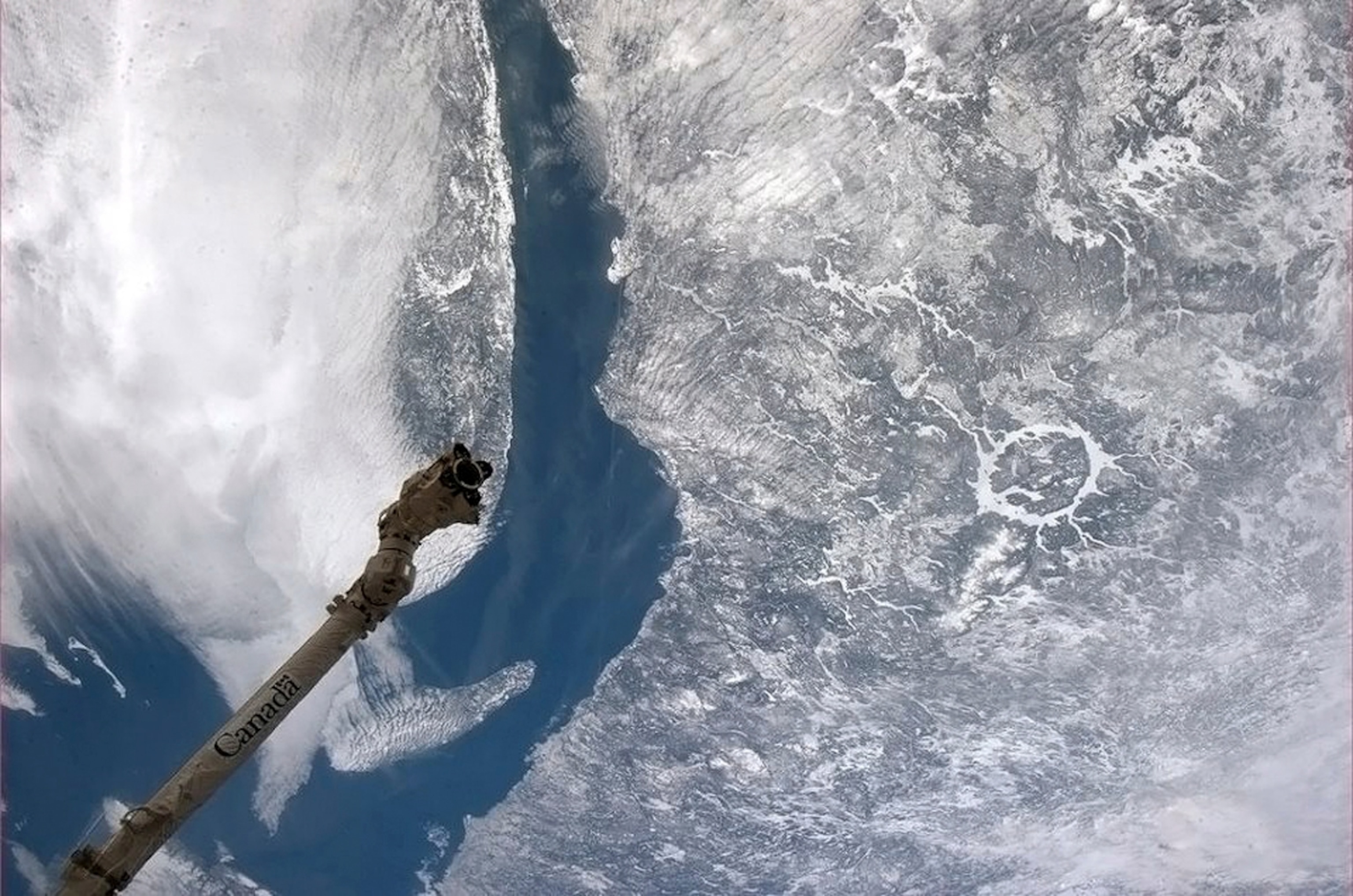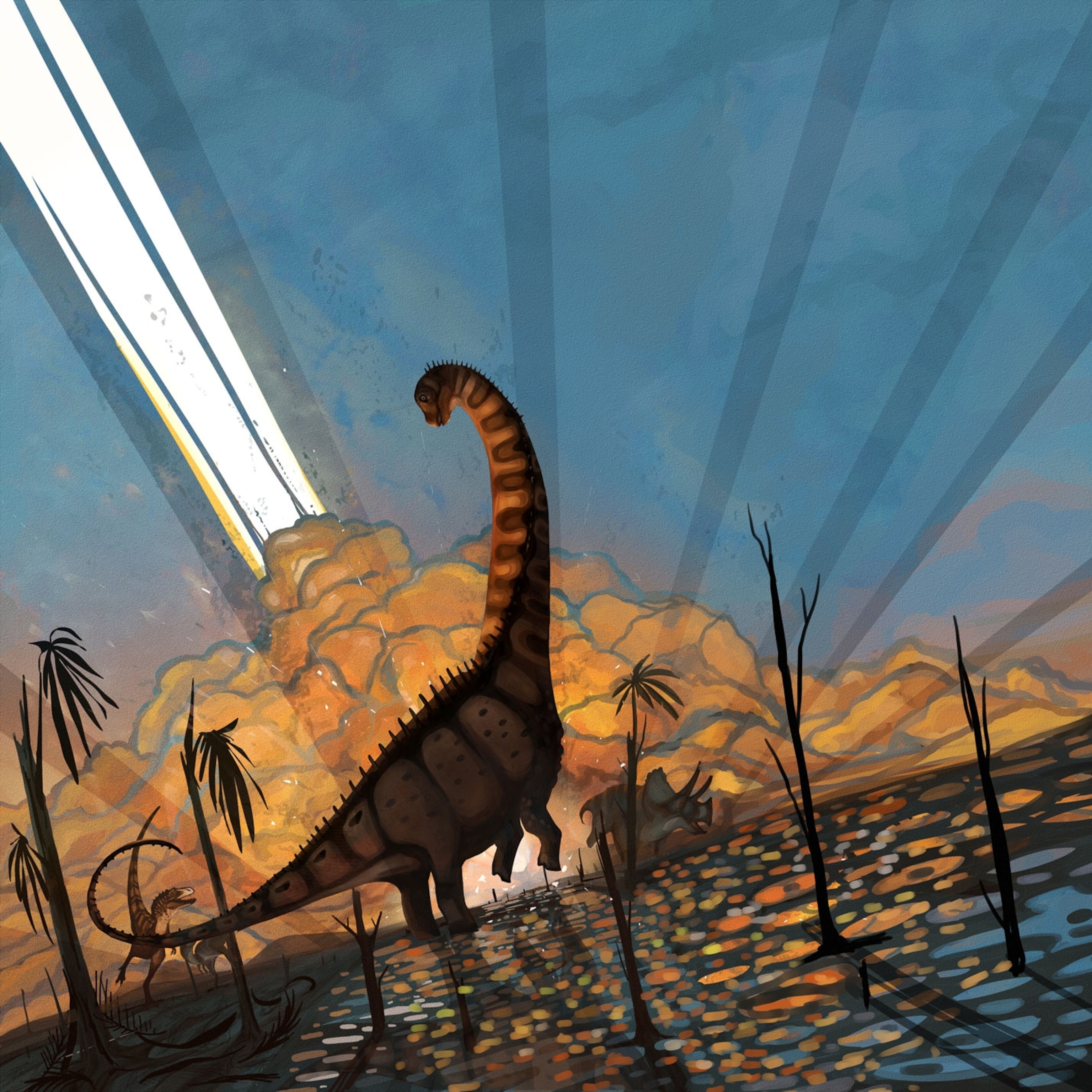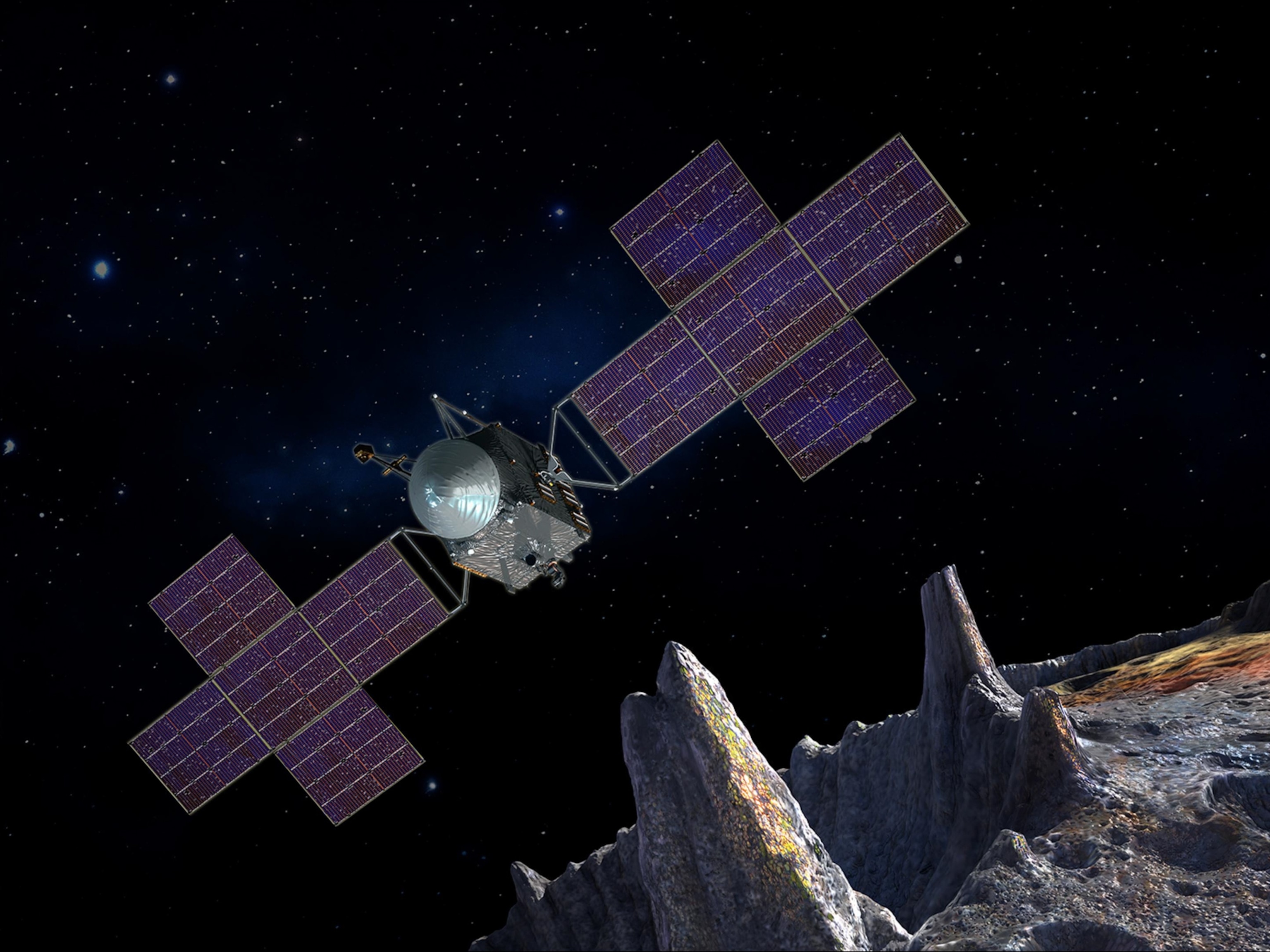
Helpful Tips For Nuking An Asteroid
Preparing for a worst-case scenario, scientists are stepping up research into the nuclear option.
“Did you see the movie Deep Impact?”
Yes, I did, I tell David Morrison, the chief scientist for the Planetary Defense Team at NASA's Ames Research Center. That’s the 1998 film where astronauts pilot a spacecraft carrying nuclear weapons into the center of a massive comet, destroying the threat moments before it hits Earth.
“The conclusion contains an error,” says Morrison. “They've just blown this comet apart, and our hero and heroine, hand-in-hand on a mountain, watch this beautiful meteor shower. If a five-kilometer object broke up with all those things in the atmosphere, it would have created a heat pulse that would have blinded and burned them immediately.”
Ouch, I think, picturing Elijah Wood and Leelee Sobieski bursting into flames, as yet another Hollywood ending is ruined by the laws of physics. But it’s a vivid lesson. Nuking a large object in space isn’t easy.
And yet, NASA is considering it. The space agency has formalized a joint research program with nuclear weapons experts and even funded an initial design for a nuclear asteroid killer.
NASA’s chief concern isn’t an enormous, civilization-threatening object of the type that smashes into Earth, on average, every million years. Instead, it's the estimated one million asteroids in our solar system that have the potential to strike our planet and destroy a city. To date, we’ve discovered only 10,000 of these.
On February 15, 2013, we got a preview of what our continued indifference could cost us. A meteor, roughly 20 meters (66 feet) in diameter, exploded in the sky 30 kilometers (19 miles) above the Russian industrial city of Chelyabinsk, releasing energy equivalent to 500 kilotons of TNT.
On precisely the same day, a 45-meter-wide (148-foot) asteroid designated 2012 DA14 made a guest appearance, passing within 27,700 kilometers (17,200 miles) of the Earth’s surface. That’s closer than some of our communications satellites.
The universe, it seems, is trying to tell us something.
Unlike other natural disasters, an asteroid strike is preventable. One option is deflection. If an asteroid is a decade or more away, then a slight change in its velocity would be sufficient to shift its orbit so that it would give our planet a wide berth.
Deflection becomes more difficult when the asteroid is just a few years, or a few months, from hitting Earth. That’s when scientists begin discussing “disruption”—blowing it up, possibly with nuclear weapons.
But, as Morrison’s alternative ending to Deep Impact demonstrates, caution is warranted. An explosion too close to Earth could create a “shotgun effect,” pummeling our planet with a spray of asteroid fragments that could rain devastation across a vast area.
Nor do we have experience using a weapon of mass destruction as a precision instrument. We would need to know the ideal proximity and yield of the explosive device, as well as the asteroid’s physical properties. Is it porous and rocky, or dense and metallic, such as the 150-foot-wide iron-nickel object that fell to Earth 50,000 years ago, creating the nearly mile-wide Meteor Crater in Arizona?
The Perfect Couple
In other words, how does one nuke an asteroid and make sure to obliterate it so thoroughly that the bits won't kill us like a shotgun blast?
When scientists debate methods for blowing up asteroids, they speak in terms of “energy coupling”—how much of the explosive energy is transferred to the target, and the effect of that energy as it travels through the asteroid.
And that’s why the composition of an asteroid can be crucial.
Consider an asteroid whose orbit would place it on a collision course with Earth in ten years. At that distance, changing its velocity by just a centimeter per second (0.02 miles per hour) could nudge it enough to avert disaster.
One way to do this would be a kinetic impactor—a high-speed spacecraft that would crash into the asteroid, delivering energy by dumping its momentum.
But, here’s the catch: The larger the asteroid, the more massive the spacecraft would need to be to knock it off course. And there's a limit to how much mass we can launch to an asteroid.
That’s when a nuclear weapon might be the better choice. A spacecraft could deliver a nuke that would explode near the asteroid, irradiating a large fraction of its surface with x-rays and neutrons.
“Those heat up the surface of the asteroid to very high temperatures, vaporize it—and then the blow-off momentum from that vaporized material imparts a gentle change in velocity to the asteroid,” says Megan Syal, a researcher at the Lawrence Livermore National Laboratory in California who is working on planetary defense scenarios.
But, Syal adds, the same blast wouldn’t affect all asteroids the same way. If the surface of the asteroid contains light elements such as water-enriched minerals or water ice, the x-rays and neutrons will penetrate more deeply than an asteroid whose surface is metallic. “It’s harder to couple energy as efficiently in those cases,” says Syal.
Bombs Away
The worst-case scenario might be if we discovered an asteroid only a couple of weeks away from slamming into us.
Brent Barbee, a flight dynamics engineer at NASA’s Goddard Space Flight Center, believes he has the answer: an interplanetary ballistic missile.
Barbee and Bong Wie, the founding director of the Asteroid Deflection Research Center at Iowa State University, conducted a three-year study on the feasibility of rapidly intercepting and nuking an incoming asteroid.
In their scenario, we don’t have time to deflect the asteroid. Their proposed solution: a ready-to-launch spacecraft—the Hypervelocity Asteroid Intercept Vehicle (HAIV)—that would penetrate its surface.
And, no, they didn’t get the idea from Bruce Willis and his intrepid band of space oil riggers in the film Armageddon. Previously published studies have examined the potential use of ground-penetrating nuclear weapons as bunker busters here on Earth.
One such study estimated that an underground nuclear explosion would be at least 20 times more effective than a detonation very close to the surface. But the same research also revealed a technological hitch: The bomb’s fusing mechanism would be destroyed if its impact velocity were greater than 671 miles per hour (300 meters per second).
Basically, the impact would disarm the nuke.
And in a scenario with an asteroid less than a few years away, the weapon would have to travel much faster than that, from 22,000 to 67,000 miles per hour (10 to 30 kilometers per second) relative to the target asteroid. As a result, no detonation upon impact.
Barbee and Wie worked around the problem by designing a two-piece spacecraft. The top craft, a kinetic interceptor, would smash into the asteroid to create a crater. The second craft, containing the nuclear explosive, would then enter that crater, detonating before hitting the bottom—Bruce Willis not required.
Mounted atop an expendable rocket, the HAIV becomes a missile that its designers say—with as little as three weeks' warning—could intercept and destroy an asteroid as large as 140 meters in diameter, dispersing the fragments a safe distance from Earth.
Barbee and Wie say that it would cost roughly $500 million to test-fly the HAIV (loaded with ballast as a stand-in for the nuclear device) and target an actual asteroid. To date, NASA has not funded it.

Rock Versus Hard Place
Still, at this moment, NASA is deflecting and destroying asteroids—in supercomputer simulations.
These celestial war games are a joint project between NASA and the National Nuclear Security Administration (NNSA), a semi-autonomous government agency that oversees some of the Department of Energy’s National Labs, which have previously studied scenarios for thwarting asteroids.
In June, NASA and the NNSA announced they will deepen levels of collaboration and planning.
“We'll be providing the mission design, the flight design, the trajectory parameters, and the asteroid physical properties, and then the nuclear labs will be running their computer codes to assess the effects of both kinetic impacts and nuclear devices on these hypothetical asteroids,” says Barbee.
For instance, a nuclear explosion within an asteroid crater would not necessarily be as powerful as a ground-penetrating nuke on Earth, says Syal, who is one of the scientists participating in the NASA-NNSA collaboration.
“The increased efficiency of that approach will depend on a lot of things that are still being studied,” she says, such as the diameter of the crater, the depth of detonation, how close the explosion is to the crater’s rim, and the fraction of the energy that would radiate out to space.
“There's really a lot of variables for an asteroid in a given scenario,” says Syal, “including the composition, the porosity, the strength of the material, the way it sustains damage, the shape, its rotational state, and its internal structure.”
A solid asteroid would be easier to blow up than a porous one, for example, because the porosity dampens the shock wave as it travels through the rock.
Eyes in the Sky
While these simulations allow us to plan ahead, they’re only as useful as the data we’d be able to gather about an incoming asteroid.
Right now, for instance, we can use telescopes to study the composition of an asteroid by peering at the sunlight on its surface, where the wavelengths of reflected light vary based on the types of minerals present.
To learn more, we’d need the celestial equivalent of “boots on the ground”—a space probe.
“We would always prefer to be able to deploy a robotic precursor spacecraft to the asteroid,” says Barbee, “to go scan it with sensors, figure out what it's made of, and collect enough data to accurately determine its orbit.”
Soon, we’ll have a preview of what such a mission would look like. In 2016, NASA plans to launch OSIRIS-REx, which will survey an asteroid named Bennu and then return to Earth, carrying a tiny sample of the asteroid with it.
One reason that NASA chose Bennu for closer study is that there’s a chance it will collide with Earth sometime between 2175-2196 AD. (You’re welcome, 22nd century.) The spacecraft's measurements will also help astronomers more precisely predict the orbits of other near-Earth objects. (See this video to learn how sunlight can gradually change an asteroid's course.)
Still, even if we dispatched a robotic scout to scrutinize an approaching asteroid, some uncertainties would remain, Syal notes. Given that asteroids are oddly shaped rocks that are constantly rotating, it could be difficult to deploy an impactor or nuke at the precise place where the topography and geological composition would yield an optimal explosion.
Perhaps the greatest obstacle to sending a robot ahead, though, is time—as in, the lack of it. If the asteroid is a decade or less away from Earth, the highest priority is to deflect or destroy it as soon as possible.
But, that could change if we launched a space-based telescope to catalog all near-Earth objects—an endeavor that Morrison says could be completed in as little as five years.
Ideally, astronomers would be able to identify asteroids on a potential collision course with Earth. By tracking those, they could better predict the chances of impact and when. That could provide enough time to study the asteroid in more detail and develop an effective defense plan. And, if we could deflect an asteroid soon enough, it might negate the need for nukes altogether.
A space telescope optimized for this task is currently under development at NASA’s Jet Propulsion Laboratory. It’s called NEOCam (Near-Earth Object Camera), and its motto is, “Finding asteroids before they find us.”
If funded, NEOCam would cost $500 million to build and launch. That’s a bargain, when you consider the scope of what it could accomplish. An ounce of prevention is worth kilotons of cure.








